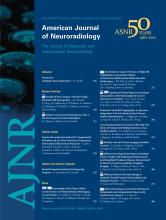Abstract
BACKGROUND AND PURPOSE: Previous studies have shown the feasibility of assessing qualitative CBV measurements in the angiography suite by using FPD-CBCT systems. We have investigated the correlation of FPD-CBCT CBV lesion volumes to the infarct volume.
MATERIALS AND METHODS: Unilateral strokes were created in 7 adult dogs. MR imaging and FPD-CBCT data were obtained after MCA occlusion. FPD-CBCT CBV and ADC maps were generated for all subjects. The animals were sacrificed immediately following the last imaging study to measure infarct volume on histology. The reliability of FPD-CBCT-based lesion volume measurements was compared with those measured histologically by using regression and Bland-Altman analysis.
RESULTS: The best correlation (R2 = 0.72) between lesion volumes assessed with FPD-CBCT and histology was established with a threshold of mean healthy CBV − 2.5 × SD. These results were inferior to the correlation of lesion volumes measured with ADC and histology (R2 = 0.99). Bland-Altman analysis showed that the agreement of ADC-derived lesion volumes with histology was superior to the agreement of FPD-CBCT-derived lesion volumes with histology.
CONCLUSIONS: We correlated FPD-CBCT measurements of CBV and MR ADC lesion volumes with histologically assessed infarct volume. As expected, ADC is a very accurate and precise method for determining the extent of infarction. FPD-CBCT CBV lesion volumes are correlated to the size of the infarct. Improvement of FPD-CBCT image quality provides an opportunity to establish quantitative CBV measurement in the angiography suite.
ABBREVIATIONS:
- CTP
- CT perfusion
- FPD-CBCT
- flat panel detector conebeam CT
- HU
- Hounsfield units
- NSA
- number of signal-intensity averages
- R2
- coefficient of determination
- RMSE
- root-mean-square error
- σ
- SD, standard deviation
- tlesion
- lesion threshold
- TOF
- time-of-flight
- TTC
- 2,3,5-triphenyltetrazolium chloride
- Vlesion
- lesion volume
- © 2012 by American Journal of Neuroradiology
Indicates open access to non-subscribers at www.ajnr.org












